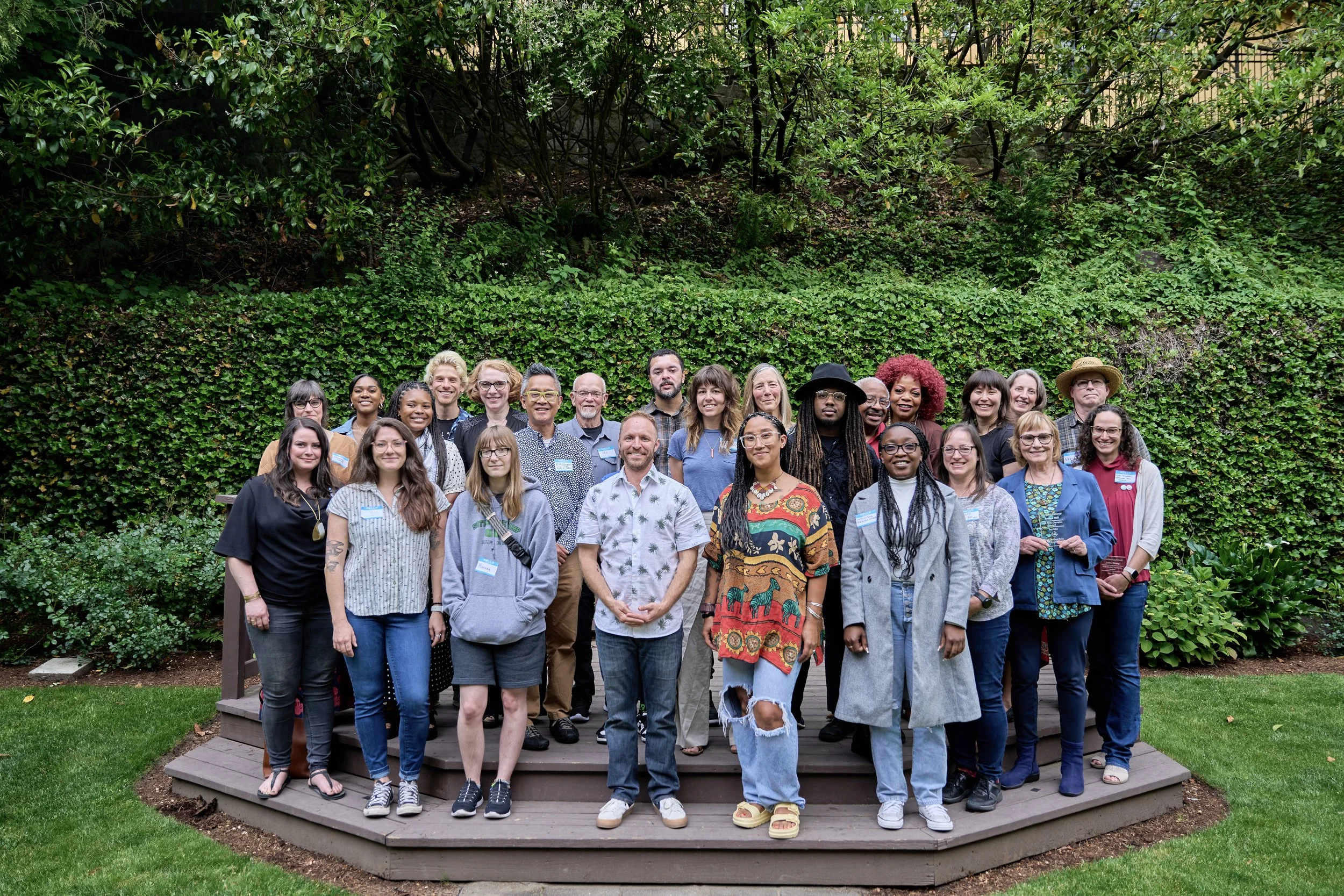This site has attracted an amazing array of experts already but I hope as it continues to expand it can perhaps pull in some poets and storytellers. To that end I will leave those who have read this far with one of may favorite urban wildlife stories. It involves a crow named “Havoc” that I came to know several years ago. It has been more than a decade since I last saw him, but he has forever altered the way I look at crows.
One of Portland’s more unique residents was a crow appropriately dubbed “Havoc.” Havoc was discovered in downtown Portland where he spent his days drinking out of the Benson bubblers, dodging traffic and barking at blond women. Our best guess is that he had been illegally raised as a pet and then set free.
Eventually his antics resulted in his capture and delivery to Audubon’s Wildlife Care Center. Upon arrival, he immediately released himself from the confines of the pet carrier in which he found himself imprisoned, flew to nearest sink, turned on the faucet and had himself a nice, long, cool drink. Once satiated, he turned to the assembled staff and volunteers, gave three high pitched barks, “whoop, whoop, whoop,” and bowed.
Havoc lived at Audubon’s Care Center for a year during which he served as an education bird teaching kids about the importance of keeping wild animals wild. With a penchant for blondes, bathes, mice and mealworms, he quickly became a favorite of the general public. Generally he had the run of the place during the day but was caged at night—something he openly and vocally despised. He would greet us each morning by springing up and down in his cage like some manic, feathered pogo stick. Failure to satiate his ever-changing desires quickly resulted in what only can be described as a vindictive temper-tantrum, a full-fledged squawking, shrieking, food flying, ankle pecking, crow freak-out. His tastes were expensive too—one day I turned to find him removing the prism from a five hundred dollar ophthalmoscope.
Several months after arriving Havoc decided to test out what it was like to be free again—my suspicion is that he was thinking about it for quite some time because he waited until several doors were simultaneously open and then launched himself through a succession doorways and out into our sanctuary. A short while later we began receiving reports of an oddly vocal crow down by the creek that runs through our property.
The creek was running high and muddy from winter rains and perched in the middle on a barely exposed rock was Havoc. Upon seeing us, he immediately leapt off the rock and made like some sort of mutant dipper, dunking himself completely below the surface and then reappearing to preen and make sure that we were still there watching. Each time we moved toward him, he inched away. It was about the time that we were about to leave him to his freedom that a particularly large swell in the creek caught him off-guard. The sight of the distraught crow tumbling beak over claw down the creek surfacing occasionally to gurgle out a forlorn shriek was matched in absurdity only by the foolish human who dove in after him and emerged on the opposite bank muddy, drenched, ungrateful biting crow firmly in hand.
He was sent for a short time to live at Oregon State University where he participated in a study of captive crows. The professor in charge arranged for a cohort of blond coeds to visit Havoc on a daily basis to keep him reasonably entertained. I have always wondered about how many times the professor in charge got turned down before he found students willing to participate. “So, I have this crow that likes blonds and I was hoping you might be able to swing by my lab about 3 pm…” Havoc eventually returned to Audubon, irascible as ever.
Eventually Havoc was set free on a property at the edge of the urban growth boundary where the neighbors were apprised and accepting of a somewhat odd bird. He spent many months in the vicinity perfecting the art of pushing azalea pots off porches and showing up uninvited at local barbecues.
One day Havoc was sighted keeping company with other crows. However, when the flock left to roost Havoc was left behind, apparently absorbed in watching a man fly his model airplane in the field below. As time wore on his interactions with the flock increased. The last known Havoc sighting was at a local school. A man working in the school basement turned to find Havoc barking at him from the window well. That was just around sunset. The next morning the flock had moved on and Havoc was nowhere to be found.
Bob Sallinger
Portland, Oregon
USA






























